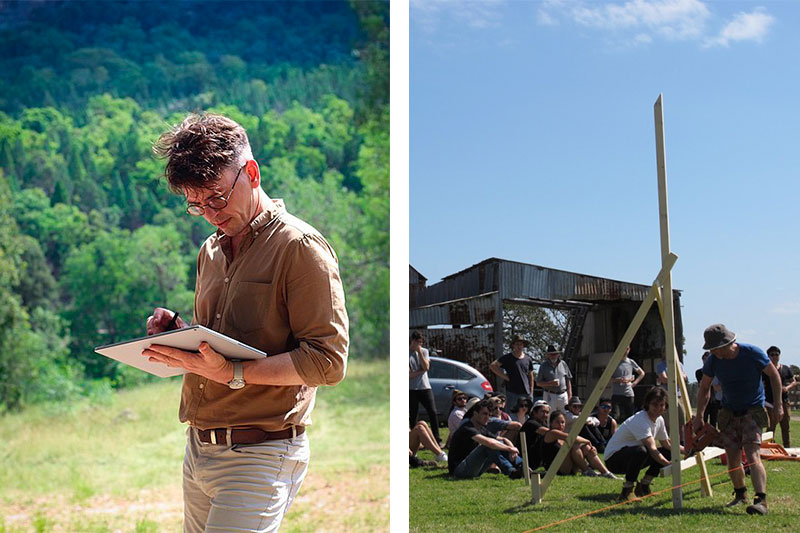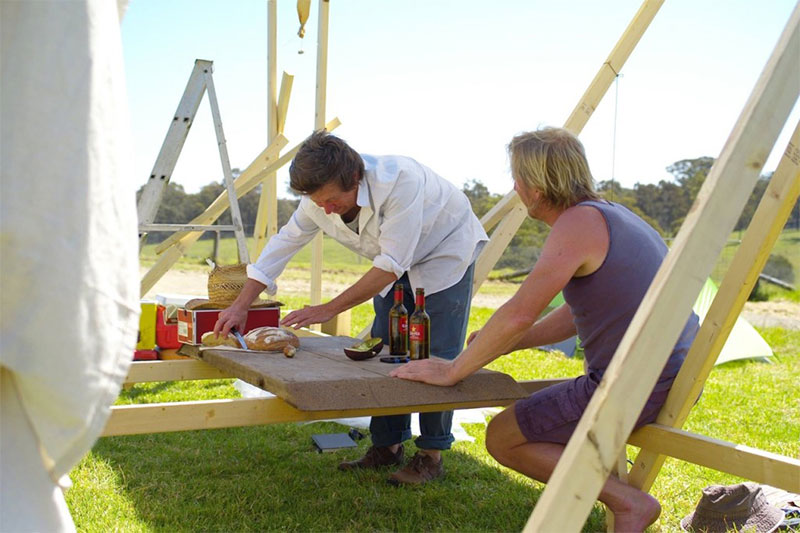In the wake of the devastation left behind by the Australian bushfires, non-profit organisation Architects Assist is helping people who desperately need new homes to connect with those who can help rebuild them. Founder Jiri Lev talked Hive Life through how he inspired a community to come together to help.
Since September last year, over 27 million acres of Australian land have been left devastated by bushfires, which have destroyed 2500 homes in the process. Whilst the recent downpour of rain has finally given firefighters and rescue personnel a much-deserved reprieve, the enormous job of assessing the damage and beginning to rebuild is only just beginning to take shape. Architects Assist is a non-profit organisation aimed at providing pro-bono disaster recovery architecture and design services to help. Founded this January by architect Jiri Lev, it is powered by 550 architectural firms and 1500 architecture student volunteers. “Disaster recovery is our immediate focus, but we seek to serve as a platform for equity of access to architecture in the long term,” says Jiri. “Sustainable and resilient architecture is not a luxury. It is a condition of our future survival and, in my view, a human right. I understand my professional privilege as a duty towards the community, the environment we live in and the world. Education, skill or experience mean nothing if they are not serving those who need them most but can’t afford them.”

Photo Credit (left): commons.wikimedia.org
Originally from the Czech Republic, Jiri moved to Australia in 2005 and has studied under some of Australia’s most renowned architecture and design gurus including Rick Leplastrier, Kerry and Lindsay Clare, John Roberts and Lindsay Johnston. With a strong interest in providing good design for all, he has already done pro bono projects for places such as the Gulgong Holtermann Museum. “My grandfather was imprisoned for refusing to become a communist secret service informant. With much difficulty, my father, as a dissident’s son, was permitted to study Architecture at a university. My parents raised me to be environmentally and socially-minded,” says Jiri of where his drive comes from. “I was never interested in a career nor any accumulation of personal wealth. I never applied for nor had a job. Instead, straight out of grammar school, I set up my own design practice. Australia attracted me as a relatively young country and a melting pot of cultures – the ideal testing ground for prototyping ideas for the new globalised world,”
For Jiri, the bushfires serve as a stark reminder of how vulnerable we are to the elements. “It’s been a priceless eye-opener for many to see in very real terms how vulnerable we are when we don’t look after our environment. We don’t even need natural disasters. We’re building our own. The average Australian home in the suburbs is basically an isolated expensive paper box whose livability is wholly dependent on air conditioning and personal car transport for each family member,” he says. “We have a particular problem with excessive leniency in the planning legislation in Australia. The main challenge I encounter is the relatively low importance people put on good architectural design and the persistent mindset of bigger being always better. I like to blame the real estate industry and its attitudes for that. Most buildings are not designed by architects. In fact, in some states, no qualifications at all are required in order to design a house!”
You might also like Nosigner: Sparking Social Innovation with Design

Photo Credit: commons.wikimedia.org
Still in its infancy, Architects Assist currently functions as a moneyless operation at the grassroots community level. “As the disaster unfolded, I had no doubt that many others reached out to affected communities with the offer of pro bono assistance. It became obvious that the resources of individual firms needed to be centralised and coordinated,” says Jiri of how it all came about. “Disaster recovery is our immediate focus and we’ve been receiving 10-20 enquiries a day. Individuals and communities in need of assistance can contact us. So far, we’ve received very good feedback from our clients who we’ve matched with providers and, depending on the circumstances, we offer everything from simple advice to full design and planning services.”
As for current relief and recovery efforts, Jiri warns of the high cost and limited effectiveness short-term solutions can yield. “Short-term solutions and high overheads notoriously plague the NGO sector. I don’t think pro bono work (in architecture) is very common and that is because sustainable and resilient architecture is not currently viewed as a necessity in Australia. Unfortunately, it takes large scale disasters to expose the failures and negligence in design and construction. It is my hope that Architects Assist will help make better design available when the community finally demands it.”

Looking to the future, he urges his peers to strive to build a better environment for everyone to live in. “Architects can’t limit themselves to individual showpieces built for members of the elite. There are highly qualified professionals, some of them our members, who are working with the government and policymakers and it’s our hope that the work we do may assist or inspire them in some way,” says Jiri. “Architects Assist aims to be more of a universal movement. A real change towards a better environment can only begin with better design available for everyone, everywhere. Until the government realises this and provides adequate legislation and funding, we need to do this pro bono – free for the public good.”
Banner Photo Credit: commons.wikimedia.org
Related Articles
Could You Live in a Tiny House? This Affordable Housing Solution Hits Asia
Fancy a Luxury Stay in a Shipping Container? This Singaporean Entrepreneur Has Made It Happen.
Is Brick and Mortar Dying? Design Collective Noise Noise Noise Doesn’t Think So.





